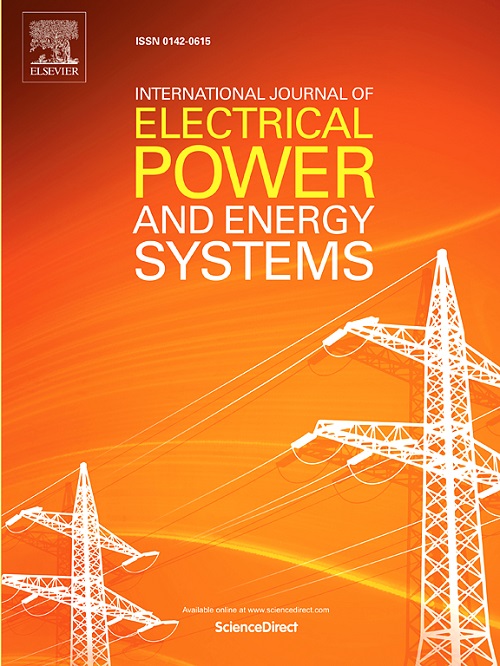A generalisable agent-based model of residential electricity demand for load forecasting and demand response management
IF 5
2区 工程技术
Q1 ENGINEERING, ELECTRICAL & ELECTRONIC
International Journal of Electrical Power & Energy Systems
Pub Date : 2025-04-13
DOI:10.1016/j.ijepes.2025.110671
引用次数: 0
Abstract
Electrification and increased uptake of intermittent renewable generation challenge power systems worldwide. These challenges increase with increasing renewable generation, such as in Aotearoa New Zealand. To address these challenges, Demand Response (DR) can reduce peak loads and balance demand with intermittent supply, extending network lifetimes and reducing greenhouse gas emissions. In Aotearoa New Zealand, residential demand is the largest contributor to peak loads and a key target for DR. However, residential demand is highly influenced by human behaviour. Current electricity demand models are typically deterministic or stochastic and do not capture behavioural dynamics, the understanding of which is crucial for successful DR. This research presents an agent-based model of residential electricity demand in low-voltage networks, which is built using high-level census data and thus generalisable to regions with similar available data. The model is constructed in MATLAB R2022b with sub-models for appliance use, space heating, and water heating, and validated with real electricity demand profiles from low-voltage distribution transformers in Aotearoa New Zealand and data from appliance use in homes around the country. By incorporating realistic behaviours and their variability, this model offers a platform for testing how human behaviour influences DR strategies and impacts human outcomes. Thus, it can inform and improve the design of DR programs based on program uptake and desired outcomes, leading to decreased network costs through increased resilience and energy security, and reduced greenhouse gas emissions through better utilisation of intermittent renewable generation.
基于智能体的住宅用电需求负荷预测与需求响应管理模型
电气化和间歇性可再生能源发电的增加给全球电力系统带来了挑战。这些挑战随着可再生能源发电量的增加而加剧,例如在新西兰奥特亚罗瓦。为了应对这些挑战,需求响应(DR)可以降低高峰负荷,平衡间歇性供电需求,延长电网寿命,减少温室气体排放。在新西兰奥特亚罗瓦,住宅需求是峰值负荷的最大贡献者,也是需求响应的主要目标。然而,住宅需求受人类行为的影响很大。当前的电力需求模型通常是确定性或随机性的,无法捕捉行为动态,而对行为动态的理解对于成功的电力需求管理至关重要。本研究提出了一种基于代理的低压电网居民用电需求模型,该模型是利用高层次人口普查数据建立的,因此可推广到具有类似可用数据的地区。该模型由 MATLAB R2022b 构建,包含电器使用、空间加热和热水加热的子模型,并通过新西兰奥特亚罗瓦低压配电变压器的真实电力需求曲线和全国各地家庭的电器使用数据进行了验证。通过纳入现实行为及其可变性,该模型为测试人类行为如何影响 DR 策略和影响人类结果提供了一个平台。因此,它可以根据计划的吸收情况和预期结果,为减少电力需求计划的设计提供信息并加以改进,从而通过提高恢复能力和能源安全来降低网络成本,并通过更好地利用间歇性可再生能源发电来减少温室气体排放。
本文章由计算机程序翻译,如有差异,请以英文原文为准。
求助全文
约1分钟内获得全文
求助全文
来源期刊
CiteScore
12.10
自引率
17.30%
发文量
1022
审稿时长
51 days
期刊介绍:
The journal covers theoretical developments in electrical power and energy systems and their applications. The coverage embraces: generation and network planning; reliability; long and short term operation; expert systems; neural networks; object oriented systems; system control centres; database and information systems; stock and parameter estimation; system security and adequacy; network theory, modelling and computation; small and large system dynamics; dynamic model identification; on-line control including load and switching control; protection; distribution systems; energy economics; impact of non-conventional systems; and man-machine interfaces.
As well as original research papers, the journal publishes short contributions, book reviews and conference reports. All papers are peer-reviewed by at least two referees.

 求助内容:
求助内容: 应助结果提醒方式:
应助结果提醒方式:


